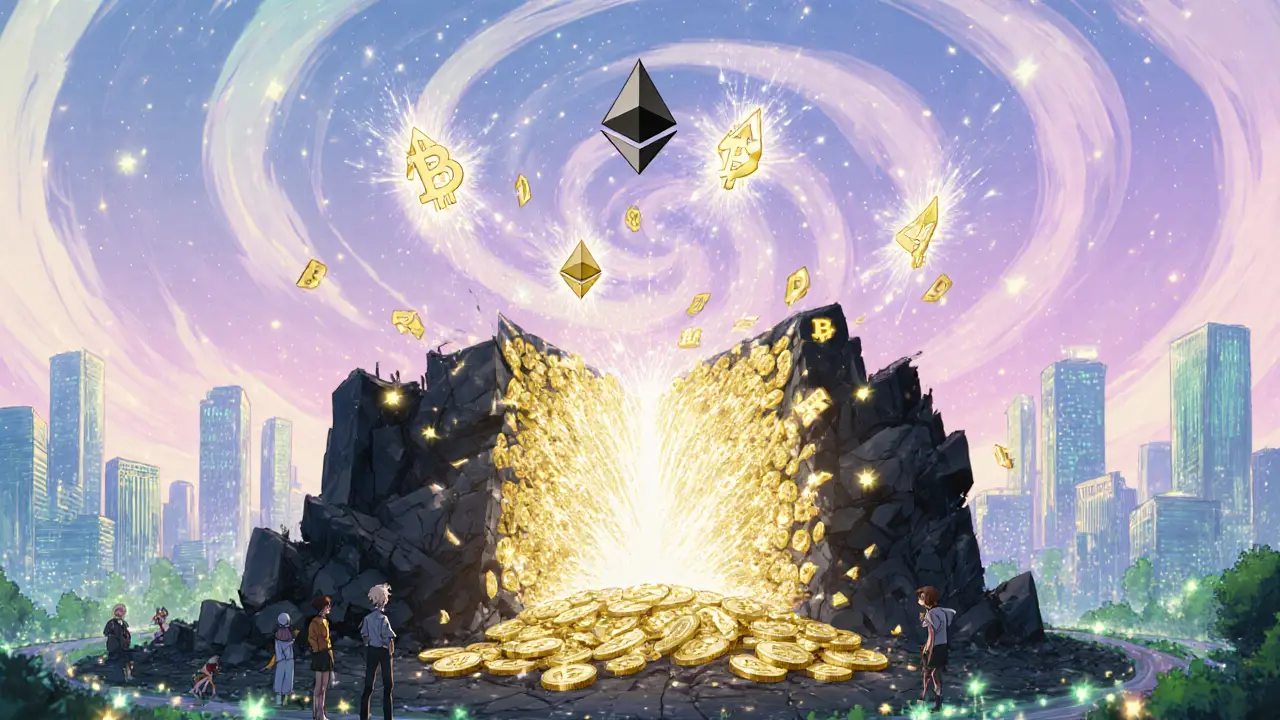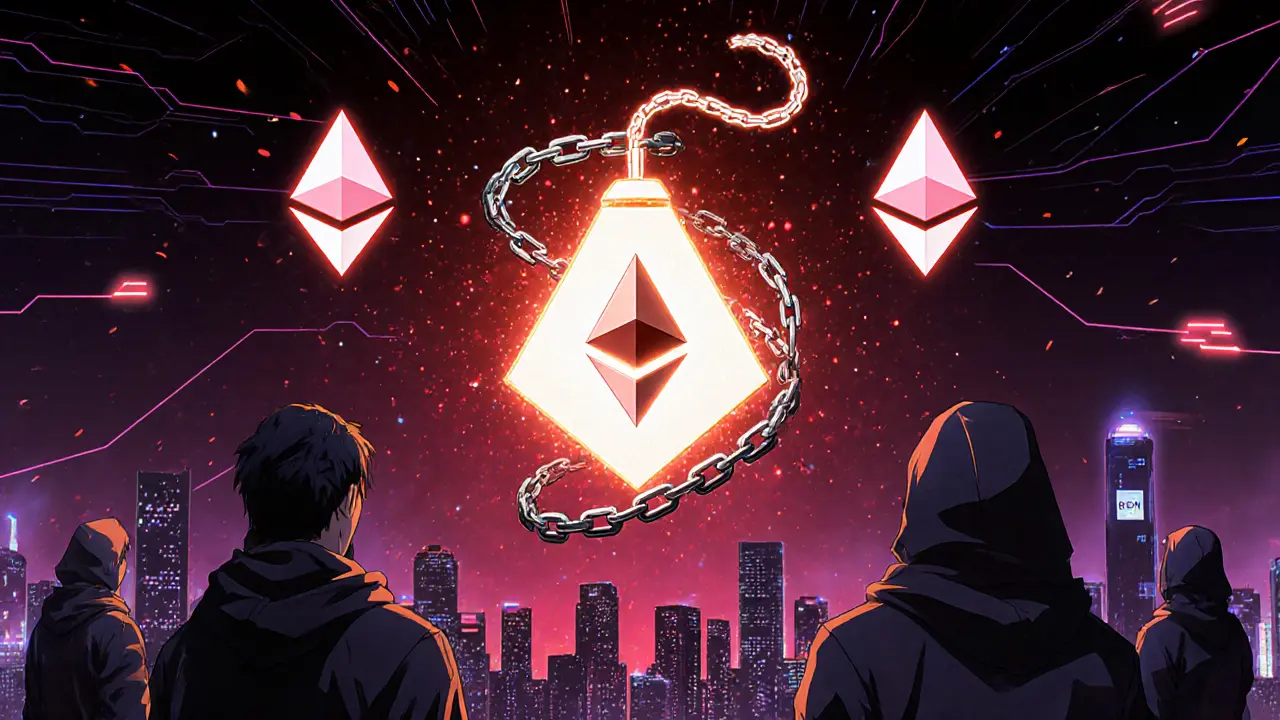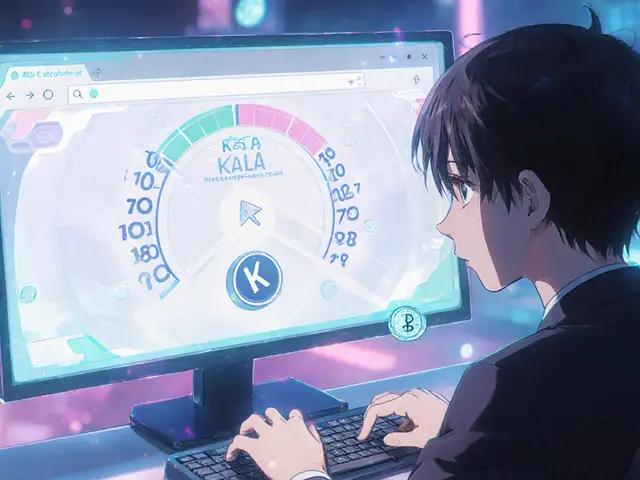Ethereum Difficulty Bomb Simulator
Simulate the Difficulty Bomb
How It Works
The difficulty bomb formula: 2^((block_number / 100000) - 2)
The bomb made mining exponentially harder by increasing computational complexity every 100,000 blocks.
Results
At this block number, mining difficulty is at the target level.
Historical Timeline
The difficulty bomb in Ethereum wasn’t just a technical detail-it was a countdown timer built into the blockchain to force a revolution. When Ethereum launched in 2015, it was designed to eventually stop mining forever. But miners weren’t eager to give up their hardware, their profits, or their role in securing the network. So the developers built something drastic: a mechanism that would make mining so slow and expensive that continuing on Proof of Work (PoW) would become impossible. This was the difficulty bomb.
How the Difficulty Bomb Worked
The difficulty bomb was a hidden formula inside Ethereum’s mining algorithm, Ethash. Every few hundred thousand blocks, it added an extra layer of computational complexity to finding new blocks. At first, it was barely noticeable. Block times stayed close to the target of 15 seconds. But over time, the bomb grew exponentially. By 2021, blocks were taking 20 seconds. By mid-2022, they were approaching 30 seconds. And if left unchecked, they would have stretched to 15 minutes or more-making Ethereum unusable for everyday transactions. The math behind it was simple but brutal. Every 100,000 blocks, the difficulty multiplier doubled. The formula looked like this:2^((block_number / 100000) - 2). That means after block 4.3 million, the bomb started ticking. After block 9 million, it was in full force. Miners had to use more powerful GPUs, burn more electricity, and earn less per hour. Profitability dropped. By late 2021, many miners were losing money after paying for power and cooling.
Why It Was Created
Ethereum’s founders didn’t want to be stuck with Proof of Work forever. PoW is energy-intensive. Bitcoin uses more electricity than some countries. Ethereum, at its peak, consumed around 50 terawatt-hours per year-equivalent to the entire country of the Netherlands. The team knew this wasn’t sustainable. They planned to switch to Proof of Stake (PoS) from day one, where validators stake ETH instead of solving math puzzles. But PoS needed time to build up enough security and user trust. The difficulty bomb was the forcing function. It gave miners a hard deadline. No voting. No majority rule. No more excuses. If they didn’t switch to PoS by the time the bomb went off, the network would grind to a halt. It was a way to prevent the kind of stagnation Bitcoin faced with slow upgrades. Ethereum wouldn’t wait for miners to agree-it would make agreement the only option.Repeated Delays and the Cost of Waiting
The bomb wasn’t meant to be postponed. But reality got in the way. Developers kept running into delays with the PoS rollout. So they had to push back the bomb with hard forks-major protocol updates that all nodes had to install. - Byzantium (2017): Delayed the bomb by 3 million blocks. - Constantinople (2019): Pushed it another 5.8 million blocks. - Muir Glacier (2020): Added another 900,000 blocks to buy more time. Each delay meant months of coordination between developers, clients (Geth, OpenEthereum, Nethermind), and mining pools. The community grew frustrated. Some miners felt betrayed. Others saw it as proof that Ethereum was too complex to manage. Ethereum Classic, a fork that stayed on PoW, saw its hashrate jump 300% between 2020 and 2021 as miners fled the ticking bomb. Reddit threads from r/EtherMining in 2021 showed miners reporting 30-40% drops in daily earnings. One user, CryptoMiner87, tracked his income falling from $42.50 to $27.60 per day as block times stretched. GPU manufacturers like NVIDIA lost an estimated $700 million in revenue as miners sold off their rigs.
The Merge: When the Bomb Was Defused
On September 15, 2022, Ethereum completed the Merge. The last PoW blocks were mined. The network switched entirely to Proof of Stake. The difficulty bomb was no longer relevant. It was turned off. Ethereum’s energy use dropped by 99.95%. The blockchain became faster, cheaper, and more secure-not because miners wanted to change, but because they had no choice. The results were immediate. Gas fees fell by 15% in the first week. Over 16.5 million ETH was staked by validators. Institutions that had been hesitant to invest in Ethereum-like Grayscale and BlackRock-saw the Merge as proof the network could evolve without breaking. The SEC later cited the removal of mining as a key reason for classifying Ethereum as a non-security.What Happened After the Bomb?
The bomb’s legacy lives on. It proved that a blockchain could force a major upgrade without relying on miner consensus. Other networks took notice. Cardano uses voting. Solana relies on centralized coordination. But Ethereum showed that a technical deadline could work-even if it was painful. Today, there’s no plan to bring back the difficulty bomb. The Ethereum Foundation says upgrades will now be driven by economic incentives, not coercion. But the lesson remains: if you want to change a decentralized system, you need to make staying the same worse than moving forward. The bomb also changed how developers think about upgrades. Before, they worried about miner resistance. After the Merge, they worry about community apathy. The Prague upgrade, originally planned for late 2023, got delayed by eight months-not because of technical problems, but because no one was pushing hard enough. Without the bomb, urgency vanished.
Why the Difficulty Bomb Was a Success
It wasn’t pretty. It wasn’t fair. It caused chaos. But it worked. - Ethereum went from a high-energy PoW chain to the most efficient smart contract platform in the world. - It avoided a chain split like Bitcoin Cash or Bitcoin SV. - It forced the entire ecosystem-miners, exchanges, wallets, dApps-to adapt together. Academic studies from the University of Cambridge found Ethereum’s bomb led to 87% faster upgrades than governance-based models. Even critics like Bitcoin developer Jimmy Song admitted it was effective-even if they hated the method. The bomb didn’t just change Ethereum. It changed how blockchain communities think about progress. You can’t wait for everyone to agree. Sometimes, you have to make staying behind so costly that moving forward is the only rational choice.What the Difficulty Bomb Teaches Us About Decentralization
Decentralization doesn’t mean consensus. It means no single person controls the outcome. The difficulty bomb didn’t remove decentralization-it made it more resilient. Miners couldn’t veto the upgrade. Developers couldn’t delay it forever. Users, stakers, and developers all had to move together. It also showed that technology can be a tool for social change. The bomb didn’t just alter code-it altered incentives. It turned miners from gatekeepers into passengers on a train that was leaving the station. And when the train arrived, everyone got off together. Today, Ethereum handles billions in DeFi, NFTs, and enterprise applications-all on a network that uses less power than a single data center. That’s the power of a well-timed bomb.Was the Ethereum difficulty bomb ever turned off?
Yes. The difficulty bomb was neutralized during the Ethereum Merge on September 15, 2022, when the network fully switched from Proof of Work to Proof of Stake. Mining stopped, and the bomb’s exponential difficulty increase became irrelevant. The code was effectively removed from active consensus rules.
Why did Ethereum need a difficulty bomb?
Ethereum needed the difficulty bomb to force a transition from energy-heavy Proof of Work mining to the more efficient Proof of Stake system. Without it, miners had no incentive to stop mining, even as the network planned to move on. The bomb created an unavoidable deadline-making PoW too slow and expensive to continue.
Did the difficulty bomb cause miners to leave Ethereum?
Yes. As block times increased and profitability dropped, many miners migrated to Ethereum Classic (ETC), which kept Proof of Work. ETC’s hashrate jumped by 300% between 2020 and 2021. Others sold their GPUs entirely, contributing to a $700 million revenue loss for NVIDIA from lost mining demand.
How many times was the difficulty bomb delayed?
The difficulty bomb was delayed five times through hard forks: Homestead (2016), The DAO (2016), Byzantium (2017), Constantinople (2019), and Muir Glacier (2020). Each delay added millions of blocks to the timeline, giving developers more time to prepare for the Merge.
Is there a risk of a new difficulty bomb returning?
No. The Ethereum Foundation has stated there are no plans to reintroduce a difficulty bomb. Upgrades will now rely on economic incentives and community coordination. However, some developers have discussed using adaptive difficulty mechanisms in future shard chains-but without the same "nuclear option" effect.











Shaunn Graves
November 1, 2025 AT 08:12 AMThe difficulty bomb was basically Ethereum’s way of saying, 'You guys are lazy, so here’s a nuclear option.' And honestly? It worked. Miners didn’t want to quit, but when their GPUs turned into space heaters and their profits vanished, they had no choice. This wasn’t democracy-it was tech tyranny, and I love it.
Jessica Hulst
November 2, 2025 AT 17:08 PMIt’s fascinating how a piece of code-a mathematical expression, really-could alter the entire social contract of a decentralized network. The bomb didn’t just slow down blocks; it forced a reckoning. Miners were told, 'You have value, but not if that value is built on burning the planet.' And instead of fighting it, the ecosystem adapted. That’s not just technical innovation-that’s evolutionary pressure at the protocol level. We rarely talk about blockchain as a biological system, but maybe we should. The bomb was the mutation that killed off the unfit. And now? We have a leaner, greener, more resilient creature. Who knew a countdown timer could be so poetic?
Kaela Coren
November 4, 2025 AT 14:45 PMThe implementation of the difficulty bomb was a masterclass in incentive design. It did not rely on persuasion, negotiation, or consensus-it relied on the inevitability of increasing cost. This aligns with economic theory, particularly the concept of marginal utility diminishing to zero. The bomb effectively reduced the marginal benefit of PoW mining below its marginal cost, thereby inducing rational actors to exit the system. A technically elegant solution to a sociotechnical problem.
Nabil ben Salah Nasri
November 5, 2025 AT 03:24 AMBrooo, the bomb was wild 😱 Like, imagine your job suddenly gets 10x harder every year and your paycheck shrinks… but you can’t quit because the whole company depends on you. Then one day, they say, 'Hey, we built a better way, and now you’re not needed.' And you’re like… 'Okay, fair.' 🙌 Ethereum didn’t ask nicely-they made staying impossible. Respect. 🤝🔥
alvin Bachtiar
November 5, 2025 AT 07:02 AMLet’s be real: the difficulty bomb wasn’t ‘brilliant’-it was a desperate, ugly, last-ditch maneuver by devs who knew they couldn’t convince miners to voluntarily suicide their profits. The fact that it worked is less a testament to genius and more a reflection of how broken PoW economics were. And don’t get me started on how ETC became the graveyard for mining junkies who couldn’t accept the future. Pathetic. Also, NVIDIA’s $700M loss? That’s the sound of capitalism screaming. 💸
Josh Serum
November 6, 2025 AT 01:45 AMYou know what’s funny? People act like the bomb was some kind of evil trick, but honestly, miners were just being selfish. They had a good thing going-free money, cool hardware, power to influence the chain-and they didn’t want to give it up. But the planet doesn’t care about your GPU profits. And let’s be honest-if you’re still mining ETH after 2020, you weren’t a crypto believer, you were just a miner. The bomb didn’t punish innovation-it punished greed. And that’s a good thing. 😊
David James
November 7, 2025 AT 18:18 PMWow this is so cool! I never knew the bomb was so important. I thought it was just some math thing. But now I see it was like a time bomb that made everyone work together. So smart! Ethereum is like a superhero that saved the planet. 👏👏
DeeDee Kallam
November 9, 2025 AT 17:57 PMso like… the bomb made miners cry? 😭 i feel bad for them but also… they had it good for too long. like, we all knew pox was trash. why did they wait till the last minute? also, did anyone else sell their rtx 3080s for $2000 and then buy them back for $500 after the merge? 🤭
Helen Hardman
November 10, 2025 AT 21:18 PMCan we just take a moment to appreciate how wild it is that a bunch of coders built a countdown timer to force a global economic shift? It’s like they knew people wouldn’t change unless they had no choice. And honestly? That’s the only way big systems like this ever evolve. I remember when I first heard about the bomb-I thought it was a joke. But then I saw the block times creep up and realized… ohhh, this is real. And now? We’re living in the future they designed. I’m so proud of this community. 🌱✨
Bhavna Suri
November 11, 2025 AT 21:45 PMThis article is too long. I did not read all. But I know that Ethereum changed. Now it is green. Miners are sad. That is all.
Elizabeth Melendez
November 13, 2025 AT 19:24 PMOMG I just realized something-I was mining ETH in 2020 and totally didn’t get why my profits kept dropping! I thought it was just the market, but now I see it was the bomb ticking 😳 Like, I was living through history and didn’t even know it. And then the merge happened and suddenly my old GPU was useless… but I felt kinda proud? Like, I was part of something that actually changed the world. Also, I staked my ETH after and now I get free interest? Best decision ever. 🙌 If you’re still mining PoW, please stop. The planet is begging you.